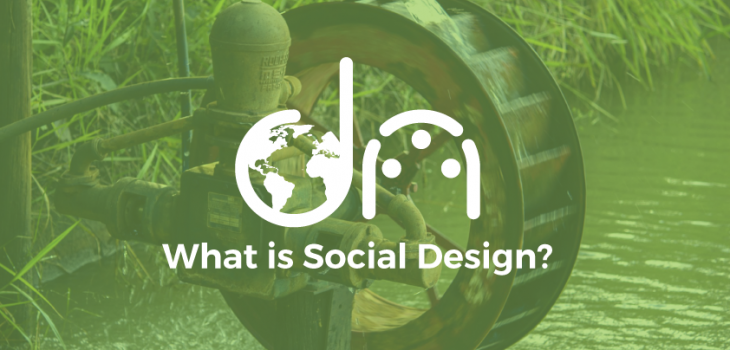 Blog
Blog
What is Social Design?
What is Social Design?
“For us, Social Design is all about being mindful of the community you are designing for and working together to improve the world we live in.”
28th September 2017 - Design for Need, Social Design
By Matt McClumpha
Social Design is a term which has gained a lot of traction recently, following the rise of ‘Social Enterprises’ and other innovative non-profits being created, but what exactly is it? In this article I will briefly discuss what our definition of ‘Social Design’ is and why it is so important.
First let’s imagine you bought a brand new phone; it can stream the latest music, take high definition photos and you can even control the thermostat while at work! It has made your life so much easier. Now imagine you took that phone to the top of a mountain, what would happen then? There would be no signal, meaning you can’t call or listen to music and there's no electricity so the usage is temporary. The only, albeit less practical use you may have for it, is using it as a plate or maybe a fashionable hat. Although the phone works well at home, it simply is not designed to be used at top of a mountain. This is true with social design as well. Just because a design/technology works well in one area, it doesn’t mean it will work well in another.
For us, Social Design is all about being mindful of the community you are designing for and working together to improve the world we live in. It is about designing for needs rather than wants, finding practical solutions to enhance people's well-being and livelihoods. Through social design we can address a range of social issues, such as access to water, to create a more just and sustainable society.
Social Design projects can have a range of different outcomes and solutions depending on the problem addressed. For example, the outcome could be a product (i.e. designing an all-terrain wheelchair allowing increased mobility); a service (i.e. services which allow people to share needed resources), a system (i.e. improving a water purification systems to disinfect water like Pure Water), or even a process (i.e. designing a procedure that increases crop yield). It is important not to limit yourself on what the outcome or solution is, as this allows you to think of new possibilities which could better people's lives.
As a designer, I am responsible for every choice I make during the design process. The main consideration to recognise is sustainability, this leads to the consideration of the social, economic and environmental impact of the solution. If one of these considerations is missed, then the project will soon fail. For example, when choosing the material for the solution you may pick something which is very cheap (economic) and locally available (social), however the material produces toxic gases during manufacturing (environmental). Although the solution may succeed for a short period, the long-term impacts of this material will harm people's health. There are so many more considerations to take when designing for positive social change but that’s worthy of an article on its own.
Well, there you have it. A short explanation of what social design is to us and why it’s important. In the upcoming weeks we’ll be releasing a three part blog series all about the field of social design we focus in: WASH, Agriculture and Environmental Conservation. This series will introduce you to these areas, explaining the need for social design, why we chose these specifically and how social design can help. If you have any questions or would like to get in contact, you can do so via our social media or on our website.

Matt McClumpha
When I’m not designing our latest innovation or working on our website, I occasionally like to write blogs. Whether it be about our project work abroad, designing for international development or even a selection of intriguing puzzles for you to solve.